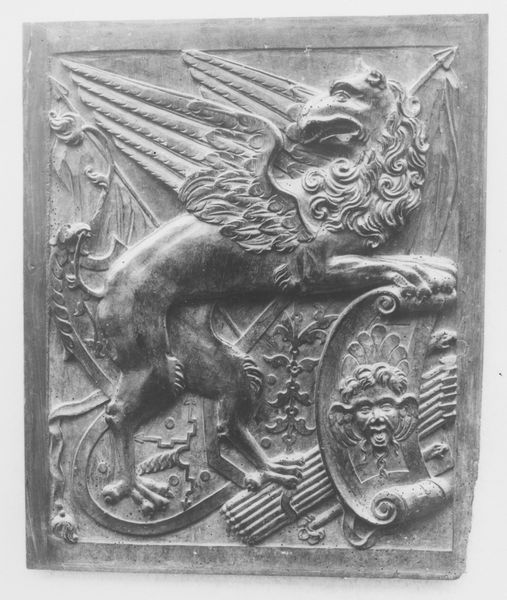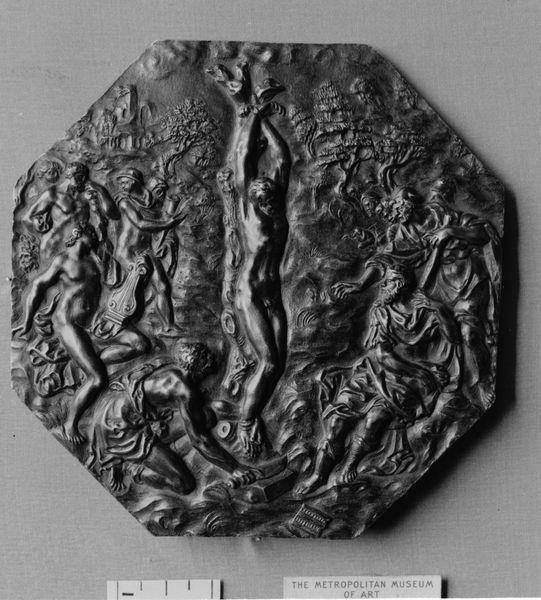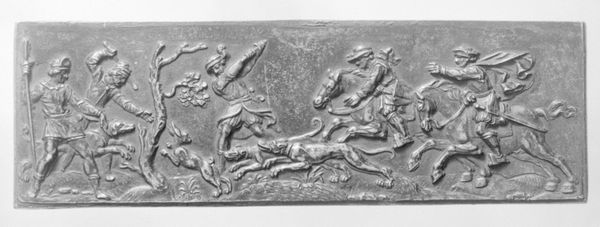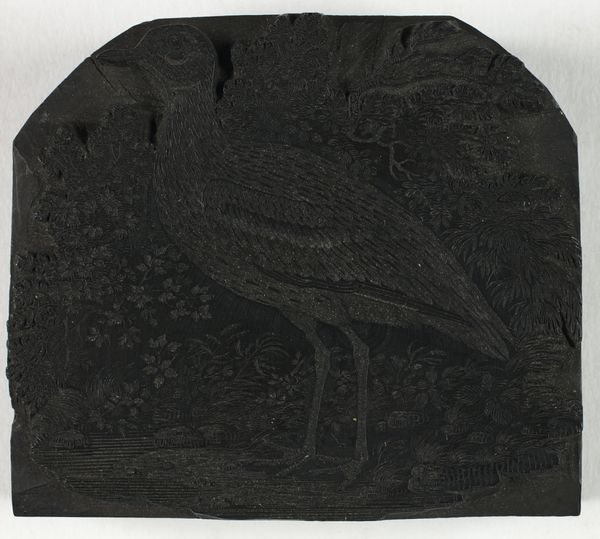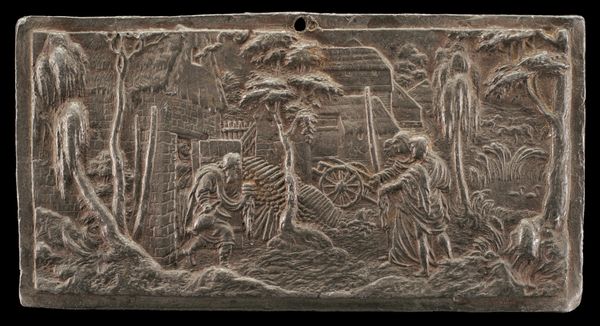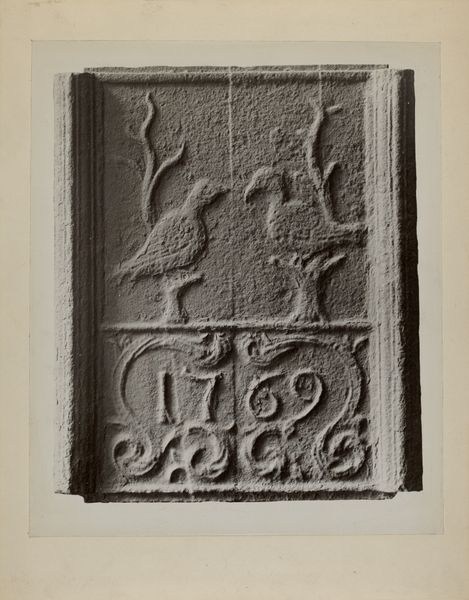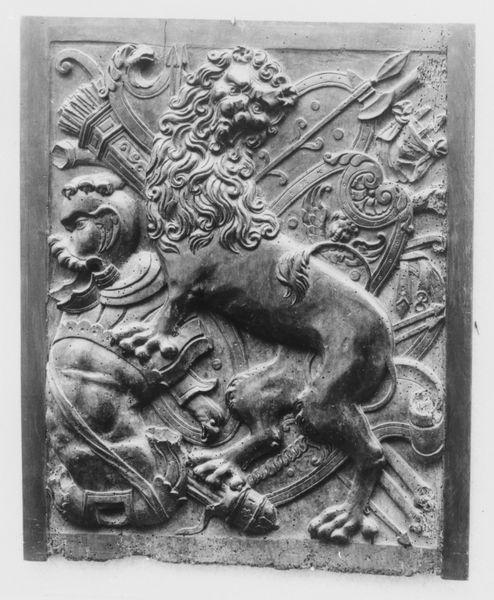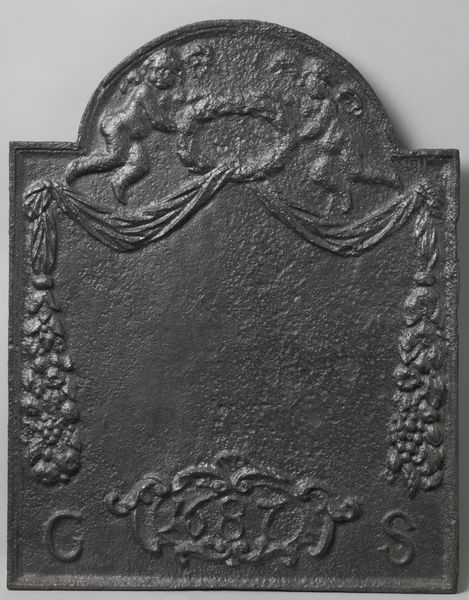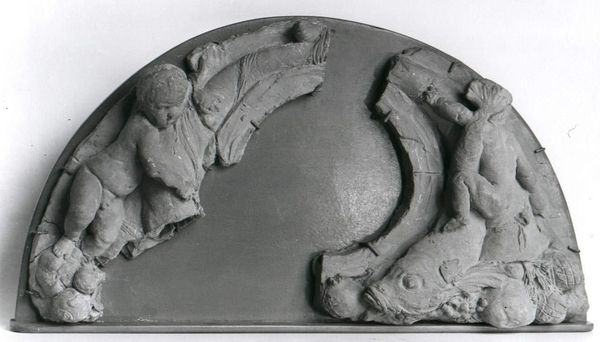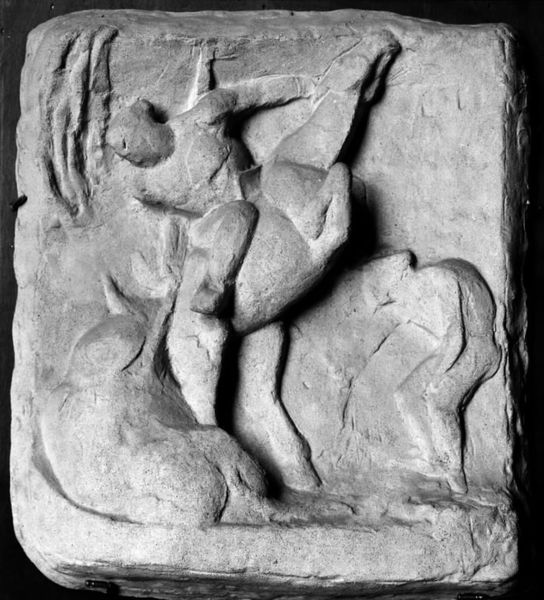
carving, relief, ink, sculpture
#
carving
#
sculpture
#
textured
#
detailed texture
#
asian-art
#
relief
#
sculptural image
#
figuration
#
form
#
ink
#
geometric
#
sculpture
Dimensions: H. 4 3/8 in. (11.1 cm); W. 4 1/4 in. (10.8 cm)
Copyright: Public Domain
Editor: Here we have Fang Yulu's "Ink Tablet with Black Stag Motif," dating from between 1871 and 1933. The piece employs ink and carving in relief, and is currently held at the Met. The square format containing this elegantly carved stag yields a striking composition of organic and geometric forms. What aspects of its formal construction strike you? Curator: The restrained palette of monochrome ink heightens the importance of texture and form. Note how the meticulous carving animates the stag's coat. These tiny dots, contrasted with smooth planes of its body, create depth. Furthermore, the work subverts its medium: ink, typically fluid, is rendered here in static, sculpted relief. Editor: So, you’re saying the tension arises from this play between materials and form? Curator: Precisely. Consider the balance struck between positive and negative space; the stag occupies the visual foreground, yet the smooth, unworked background contributes substantially to the image. The cracking across the tablet, what is your response? Editor: It lends it a beautiful patina of age, an honesty, it seems, of time and experience... and beautifully enhances the carving of the stag. The work's formal constraints invite focus on details like the anatomical accuracy—or purposeful distortion—of the stag. Curator: Yes, though somewhat stylized, it is also remarkably observed. The textural differentiation delineates a hierarchy of forms; what do you find of the borders, the framing square in relation to the form of the Stag? Editor: They play nicely, echoing one another, as a kind of formal tension and harmony... very rewarding to explore! Curator: Indeed. These self-imposed limitations allow for heightened engagement with artistic and philosophical principles. The texture serves not merely a representational, but also structural purpose.
Comments
No comments
Be the first to comment and join the conversation on the ultimate creative platform.



